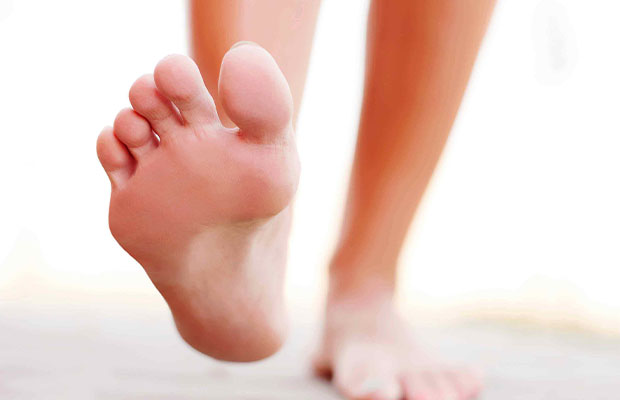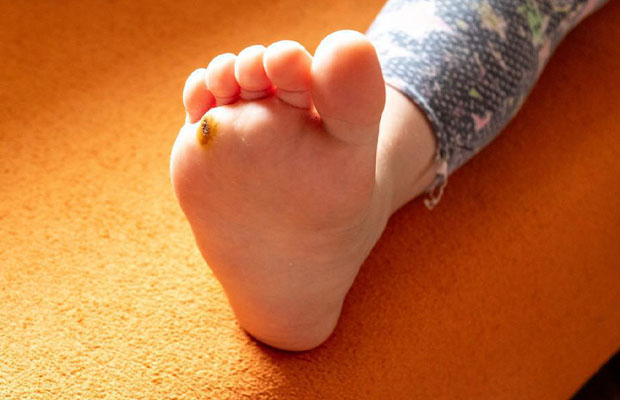Cyst On The Bottom Of Foot: Causes And Treatment

You may experience discomfort or pain as you go about your daily activities due to irritable growths on your ankles and feet. Although they can have a variety of causes, these growths are frequently soft-tissue masses that are not cancerous.
Cyst on the bottom of the foot is a protruding, sac-like bump that swells with liquid and can be brought on by an infection, trauma, inflammation, or clogged oil glands.
In this post, we’ll examine the situation and possible treatments for cysts. Keep reading.
Table of Contents
What Is A Cyst?
A type of fluid-filled sac known as a ganglion cyst can develop on your foot, ankle, as well as other joints all over your body. They happen when the joints and ligaments in your body produce fluid.
The top or bottom of your foot can develop ganglion cysts, which range in size from small to large. Although ganglion cysts are not dangerous or cancerous, they can still hurt.
Symptoms Of Ganglion Cyst
Numerous ganglion cyst symptoms overlap with those of other soft tissue masses. Make an appointment with our doctors at Podiatry Hotline Foot & Ankle if you experience any of the following symptoms so they can determine what kind of cyst you have.
- a noticeable lump on the top or bottom of your foot or ankle.
- a dull ache or pain nearby the lump, which could indicate that your cyst is pressing on a ligament or tendon.
- tingling or burning, which may be a sign that a cyst is pressing on a nerve.
- when you wear shoes, it irritates the lump.
If you have any of these symptoms and are between the ages of 20 and 40, you are more likely to have a ganglion cyst. A ganglion cyst is also more common in women than in men.
Causes Of Ganglion Cyst
Most cysts are idiopathic. This implies that they can develop randomly and that the exact reasons why are not known. However, when patients with foot cysts come in, we frequently notice similarities between them.
Possible causes include:
- Tendon or joint injuries – many of our patients who suffer from foot cysts have a history of tendon or joint injury.
- Osteoarthritis – while it’s not a direct causal link, osteoarthritis can create the kind of wear-and-tear that increases the risk of developing ganglion cysts.
- Genetics – some people have a genetic predisposition to developing foot cysts.
Once we have completed a thorough examination, we will know more.

Different Types Of Foot Cysts
Your feet may develop ganglion cysts, synovial cysts, or plantar fibroma cysts, three different types of foot cysts.
Ganglion cysts
The ganglion cyst is the most typical type of foot cyst. It’s benign, or to put it another way, non-cancerous, which is good news. It is frequently asymptomatic, which means that if you couldn’t see it, you wouldn’t even be aware that it was there.
Its variable size and location are the bad news. This means that the cyst’s pressure on the surrounding tissue and nerves may irritate the skin, restrict movement, or even result in foot pain. Surgical intervention is frequently needed for a ganglion cyst with symptoms.
Synovial cysts
Compared to ganglion cysts, synovial cysts are very similar. Your feet’s tendons and joints are where they always appear. They’re both benign.
The lining and contents make the biggest difference. The lining of synovial cysts is made up of these cells. As with ganglion cysts, but less so, they are filled with synovial fluid.
The terms are frequently used synonymously in the literature, and both types of cysts share a number of characteristics. The distinctions are crucial, though, as synovial cysts frequently point to an intra-articular condition. In other words, synovial cysts are more often a sign of a more serious condition.
Plantar fibroma cysts
Fibrous knots called plantar fibroma cysts develop on the plantar fascia in the foot’s arch. They always develop at the bottom of the foot, unlike the other two types.
Despite being benign, plantar fibroma cysts cannot disappear on their own. Surgery isn’t always necessary because there are non-surgical options.
How To Treat Ganglion Cysts?
You needn’t worry about treatment options if your ganglion cyst is painless. When your cyst isn’t restricting your movement or inflicting any pain, you can usually just wait it out. This means that you and your foot doctor will monitor the cyst and only intervene if or when it starts to negatively impact your quality of life.
However, you have two choices for treatment if you believe your ganglion cyst needs it: at-home care or medical attention.
At-home Treatments
- wearing shoes that are properly fitted but are loose. Sometimes relieving pressure off the cyst area is as simple as wearing shoes that are looser. However, wearing incorrectly sized shoes can result in additional foot and ankle issues, so make sure to choose comfortable shoes whenever possible.
- the area becoming immobile. Cysts may enlarge due to activity. Immobilize the region with a brace or splint to stop this, at least momentarily. Because the pressure on the nerves is lessened after immobilizing the area, you might experience less pain.
- Warm compresses. In order to lessen the pain brought on by ganglion cysts on your foot, apply warm compresses to the area. If the cyst is pressing against a nerve, this may only provide temporary relief, but it still has the potential to be very soothing.
- Advil, Aleve, and Tylenol are examples of over-the-counter painkillers. When these cysts become uncomfortable, take these medications to lessen the pain and inflammation they cause.
In-office, Professional Treatments
It’s probably time to see a foot doctor if you’ve tried the aforementioned at-home treatment options with little success. Your options from here are usually:
- Aspiration: The cyst is drained of its fluid by the doctor by inserting a needle there, which also lessens the cyst’s associated pain and discomfort.
- Surgery: Your doctor might suggest having the cyst on your foot surgically removed as a last resort to regain mobility and lessen the chronic pain brought on by ganglion cysts. The cyst will be surgically removed by the doctor, along with the stalk that connects it to the joint or tendon.
Read More:
Tags: Cyst